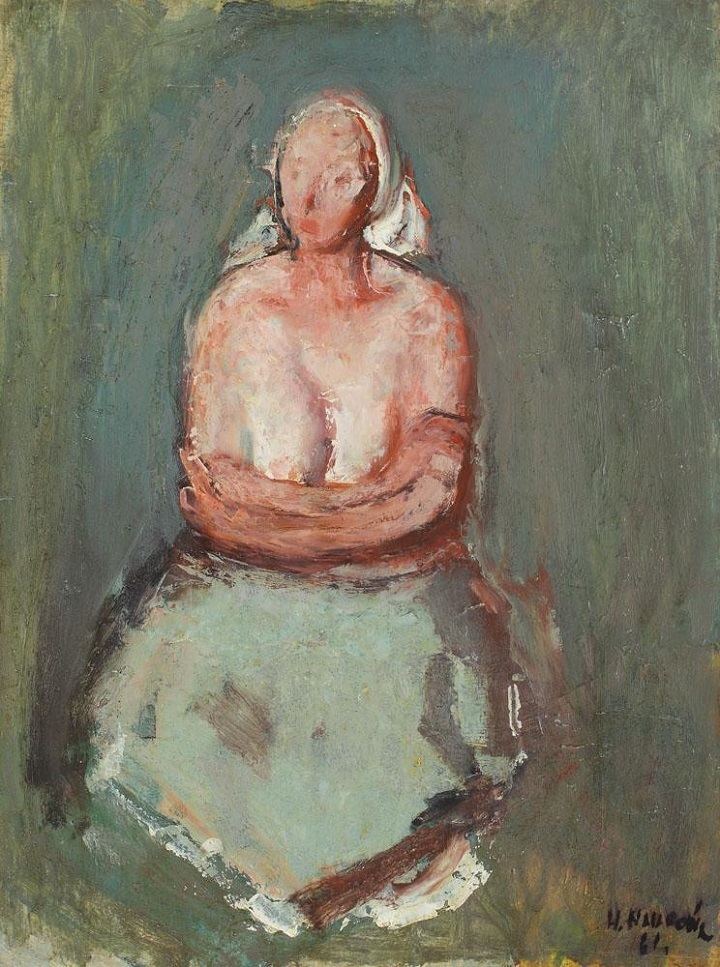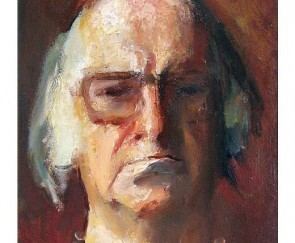Name Henry Mavrodin | Role Essayist | |
 | ||
Henry Mavrodin (born July 31, 1937 in Bucharest) is a Romanian painter, designer, essayist and university teacher.
Contents
- Formation
- University Activity
- Personal exhibitions
- Group exhibitions
- Awards and Orders
- Works in museums
- About art of Henry Mavrodin
- References

Formation
University Activity
Personal exhibitions
Group exhibitions
Awards and Orders
Works in museums
About art of Henry Mavrodin
With its elevation of spirit, depth of feeling and erudite pictoriality, this exhibition is a rare occurrence over the course of a century. I am not normally prone to bursts of enthusiasm. Awestruck by the evidence, however, I recognise the magnificence of an art that is strange, troubling, provocative in respect of time and surroundings, the idea of perfection unusual in a world that cultivates the ephemeral, superficiality, imposture and financial success. (N.b. Henry Mavrodin does not sell his art insofar as it is experienced as an intimate dialogue with destiny or God, whoever he might be.) Knowing the morality of artists, I know that he will be hated for his limited, shining, long-lasting glory. For a great artist, I was once told by the eminent art historian Eugenio Riccomini, who dedicated a monograph in Italy to our painter and was kind enough to open the exhibition in Bucharest, enemies are important. Henry Mavrodin is a bizarre alloy of pride and humility: natural pride in the creative professions (only public servants and others of their kind have a claim on mediocrity), and equally natural humility towards the great landmarks in the history of art, which he fatally dreams of achieving and equalling. He shows a sacred respect for the great European painting of centuries past and sees himself as a happy prisoner of its emotional space, most likely for a number of fundamental reasons: spiritual harmony, the need for meaning, the urgent need for philosophical inquiry, the possibility of probing the sublime complexities of technique. Those who reject improvisation, rapid and cheap recognition, seem to have no other path to choose. (...) We contemplate calmly a picture which demands our attention insatiably, melancholically, imploringly, aggressively, like mute suffering condemned to silence and strictly visual confession. The colours appear to have been invented by providence, they submit to reason and intuition alike in proportions that are implacable and, therefore, perfect. The objects have a secret life. The faces at times take on the appearance of masks; the landscapes, the compositions wrestle with their volumetric reality, inevitably crucified in bidimensionality. Their refined ambiguity attempts to combine in pure visuality material consistency and its ghost, the mental reading of an image in perspective and the concreteness of the geometrical plane of the canvas surface. Henry Mavrodin is a soul trapped between two worlds. One of his works can take a year to complete, as recorded scrupulously at the bottom of the work like a tally. The fast-paced world of today has thrown him out and into the heart of eternal art. His admirers will be rare but of a high quality. He is the final firework display in the amazing adventure of painting which began centuries ago, says professor Eugenio Riccomini. His room for manoeuvre appears to be limited. It is not. Between the memory of great past values and the contemporary world, which is incapable of establishing its own values, our painter, so extravagant with time, stubbornly and miserly saves up death in life, and installs himself comfortably as occupying an uninhabited plot of land. He fills empty space and treats wounds that continue to bleed under the surface, following in his master's footsteps, whose unusual portrait he worked on for seven years, and from which he learned that art does not march with the regiment, but consumes itself in sweet and sour solitude. Radu Cornel Constantinescu
Mavrodin is an exceptional vis-a vis the distinctive characteristics of contemporary Romanian painting, being an example of independence from the current trends, or to be more precise, the latest fashions in art today. He is a painter that loves solitude and calm, and to find these he took refuge in a corner of the island of Murano, that is in a place particularly favourable to viewing and revienwing the inner side of the pictures of his own dreams. For the paintings of Mavrodin are composed of dreams from outside time, reconstructed in the space of the painting, with the technical authority worthy of an old Fleming (…) Among the multiple aspects of the multiple revival of figurative realism, the magical evocations of Mavrodin’s painting deserve to be considered in a light of their own for their solitude and the quality of the authentic poetic vocation. Giuseppe Marchiori
